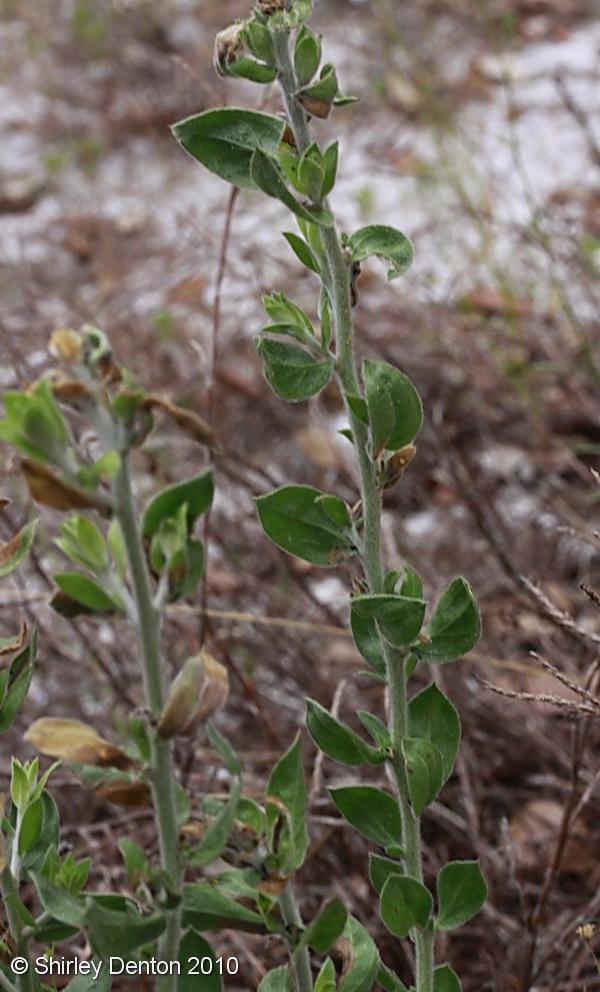Lechea mucronata
| Lechea mucronata | |
|---|---|

| |
| Photo by Shirley Denton (Copyrighted, use by photographer’s permission only), Nature Photography by Shirley Denton | |
| Scientific classification | |
| Kingdom: | Plantae |
| Division: | Magnoliophyta - Flowering plants |
| Class: | Magnoliopsida – Dicotyledons |
| Order: | Violales |
| Family: | Cistaceae |
| Genus: | Lechea |
| Species: | L. mucronata |
| Binomial name | |
| Lechea mucronata Raf. | |

| |
| Natural range of Lechea mucronata from USDA NRCS Plants Database. | |
Common name: hairy pinweed[1]
Contents
Taxonomic notes
Synonyms: Lechea villosa Elliott; [1]
Varieties: L. villosa var. typica[1]
Description
Frequent within sandhill habitats.[2]
Distribution
L. mucronata ranges from New Hampshire to Michigan and Oklahoma, them south to peninsular Florida, Texas, and northern Mexico.[1]
Ecology
Habitat
This species has been found in open areas in sandy soils of longleaf pine, scrub oak, wiregrass sand ridges as well as sandhills in general.[2] It has also been found in human disturbed areas around garbage dumps and powerline corridors (FSU Herbarium). Associated species include Longleaf pine and wiregrass.[2]
L. mucronata was found to increase its occurrence in response to soil disturbance by agriculture in South Carolina coastal plain and longleaf pine communities.[3] It has shown regrowth in reestablished native longleaf pine habitats that were disturbed by agricultural practices, making it an indicator species for post-agricultural woodlands.[4] However, L. mucronata was found to be neutral in its long-term response following cessation of repeated soil disturbance.[5]
Phenology
This species has been observed flowering in June[6] and fruits July through October.[1]
Seed dispersal
This species is thought to be dispersed by consumption by vertebrates.[7]
Fire ecology
Lechea mucronata occurs in areas that are burned.[2]
Conservation, cultivation, and restoration
Cultural use
Photo Gallery
References and notes
- ↑ 1.0 1.1 1.2 1.3 1.4 Weakley, A.S. 2020. Flora of the Southeastern United States. Edition of 20 October 2020. University of North Carolina at Chapel Hill, Chapel Hill, North Carolina.
- ↑ 2.0 2.1 2.2 2.3 Florida State University Robert K. Godfrey Herbarium database. URL: http://herbarium.bio.fsu.edu. Last accessed: June 2014. Collectors: R.A. Norris, R.F. Doren, R. Komarek, Cecil R. Slaughter, and Lisa Keppner. States and Counties: Florida: Duval, Leon, St. Johns, and Washington. Georgia: Coffee and Grady.
- ↑ Brudvig, L.A. and E.I. Damchen. (2011). Land-use history, historical connectivity, and land management interact to determine longleaf pine woodland understory richness and composition. Ecography 34: 257-266.
- ↑ Brudvig, L.A., E Grman, C.W. Habeck, and J.A. Ledvina. (2013). Strong legacy of agricultural land use on soils and understory plant communities in longleaf pine woodlands. Forest Ecology and Management 310: 944-955.
- ↑ Dixon, C. M., K. M. Robertson, A. M. Reid and M. T. Rother. 2024. Mechanical soil disturbance in a pine savanna has multiyear effects on plant species composition. Ecosphere 15(2):e4759.
- ↑ Nelson, G. PanFlora: Plant data for the eastern United States with emphasis on the Southeastern Coastal Plains, Florida, and the Florida Panhandle. www.gilnelson.com/PanFlora/ Accessed: 19 MAY 2021
- ↑ Kirkman, L. Katherine. Unpublished database of seed dispersal mode of plants found in Coastal Plain longleaf pine-grasslands of the Jones Ecological Research Center, Georgia.